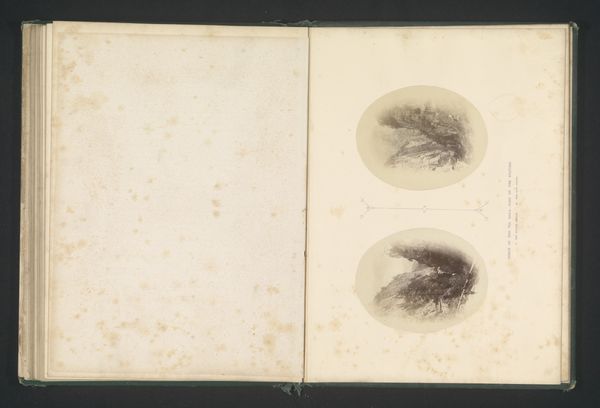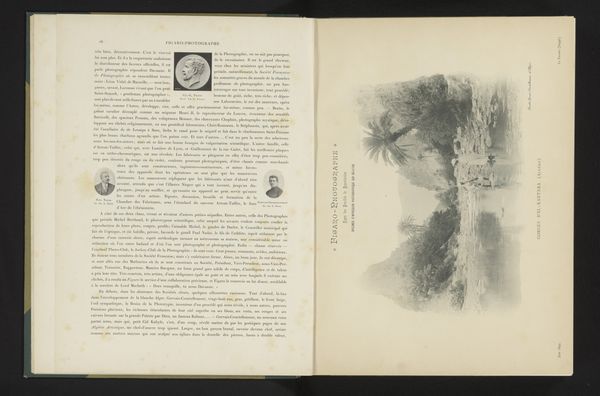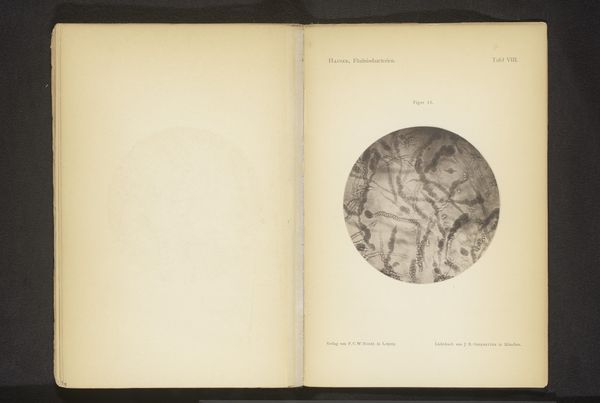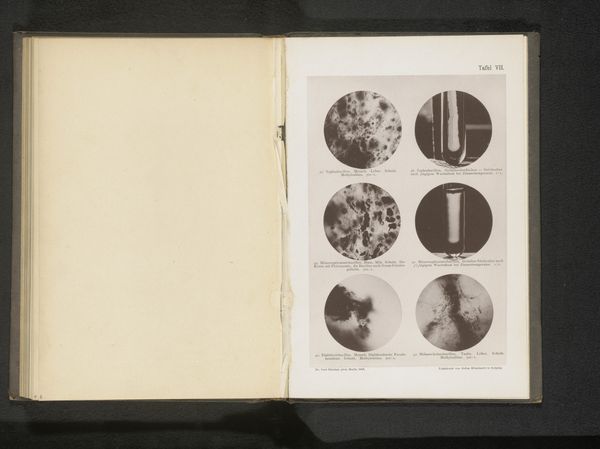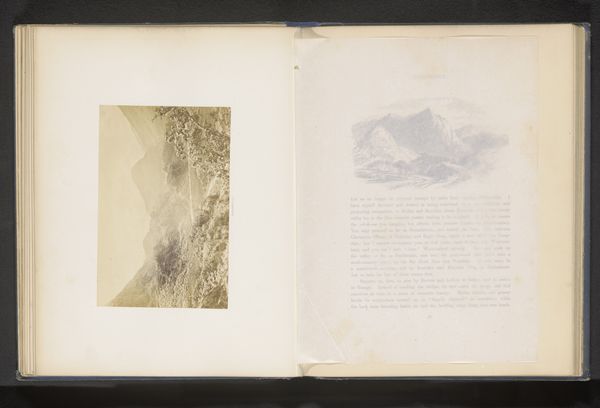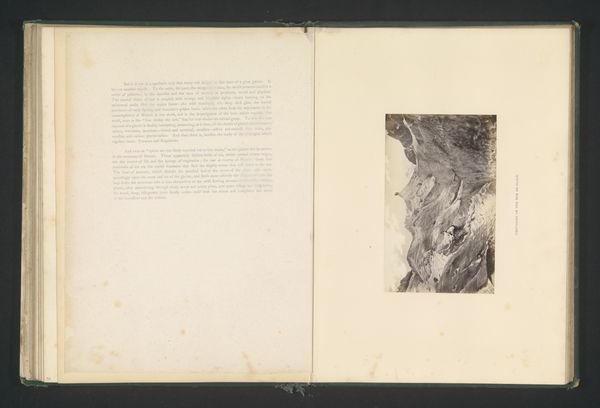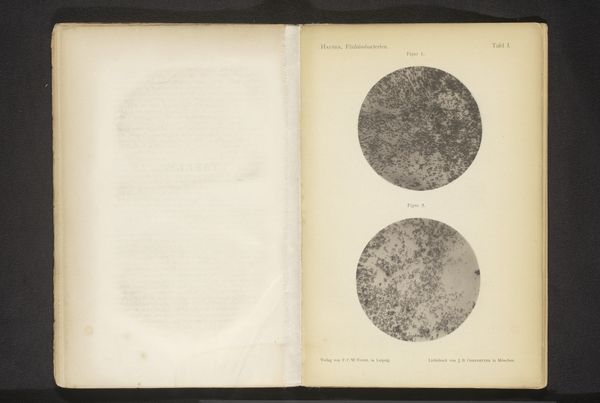
Dimensions: height 120 mm, width 95 mm
Copyright: Rijks Museum: Open Domain
Curator: Today, we're looking at a striking image called "Gezicht op een weg door de kloof van Tamina," which translates to "View of a road through the Tamina Gorge." It’s an albumen print that was made sometime before 1868. Editor: It has such a stark beauty. The almost monochromatic tones give it a timeless, slightly haunting quality. The composition, these two images stacked one over the other in circular frames, it feels very deliberate and balanced. Curator: What’s fascinating is considering how a photographic print like this, especially in the 19th century, exists as both art object and industrial product. The albumen process involved coating paper with egg whites, which were stretched and consumed in incredible quantities at the time. That material reality profoundly shaped the means of photographic production. Editor: Absolutely. Beyond the materiality, I'm struck by the implied journey the images create. The road signifies a passage, and these gorge scenes hold a sense of pilgrimage to nature, that deeply links with Romanticism. Curator: I see that. It's a fabricated scene. These journeys through remote landscapes gained symbolic weight alongside rising industrialisation. Editor: I wonder too about the gorge itself as a symbol. Its natural enclosure and mystery suggest introspection and the subconscious. Water flowing and shaping stone hints towards emotional cleansing and catharsis. These natural motifs resonated deeply with period notions about landscape and divinity. Curator: Indeed. It speaks to how landscape, especially in its 'sublime' form, was being newly appreciated for its raw, almost dangerous properties. This new visual articulation helped define it, market it and manage it. Editor: Considering these layers—from the eggs that formed the base to the cultural weight imbued by the photographic image of the gorge itself—allows me to recognize the multiple trajectories informing such a fascinating artifact. Curator: For me, the tension lies in how romantic ideals intersect with industrial processes and an emergent modern appetite for landscape, capturing fleeting nature and labor in fixed imagery. These complexities offer insights into a pivotal cultural shift.
Comments
No comments
Be the first to comment and join the conversation on the ultimate creative platform.
